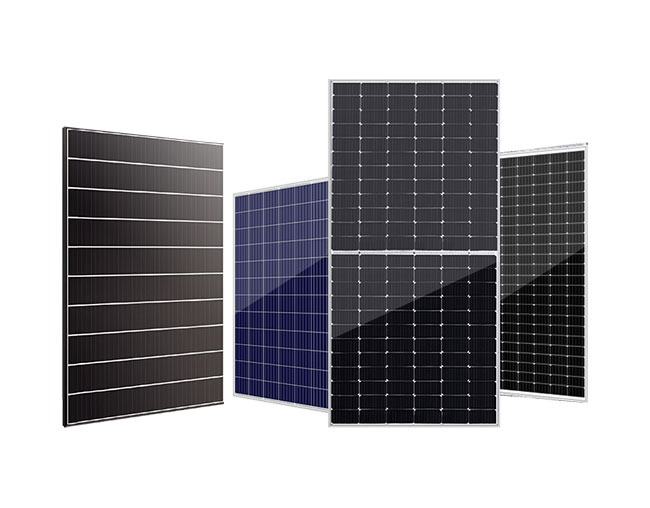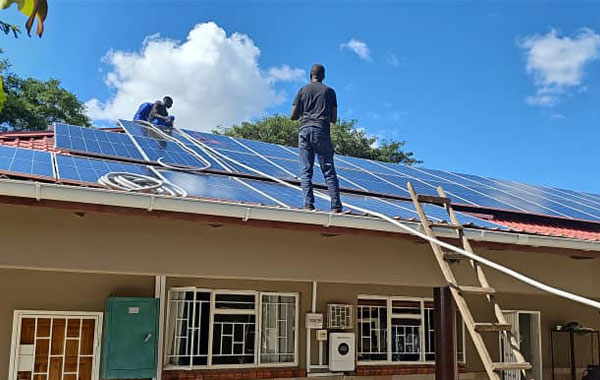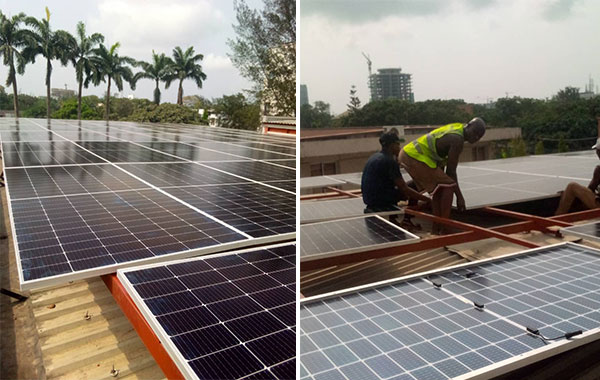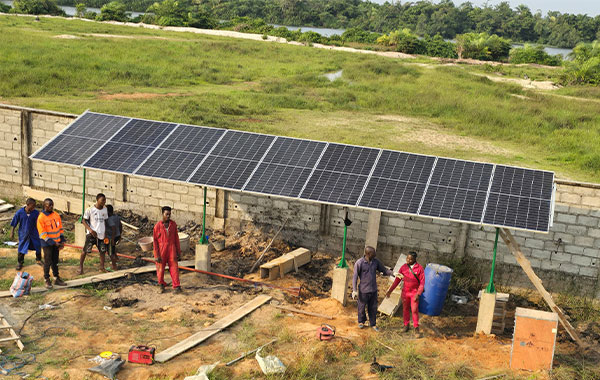
Solar energy is one of the most sustainable and cost-effective ways to power your home or business. With advancements in solar panel technology, more people are making the switch to clean energy. This comprehensive guide covers everything from understanding the basics of solar panels and their importance, to exploring the different types of solar panels available and their specific advantages. You’ll learn about the financial aspects, including costs and potential savings, as well as the step-by-step process of solar panel installation and maintenance. Additionally, we’ll delve into how to choose the right solar panel manufacturer to meet your unique needs. Whether you’re a homeowner considering solar panels for home use to reduce your energy bills or a business aiming to enhance sustainability, this guide will equip you with the knowledge and confidence to get started with solar panels.
Solar panels, also known as photovoltaic (PV) panels, are devices that convert sunlight directly into electricity. They are composed of multiple solar cells made from semiconductor materials, typically silicon, which absorb photons from sunlight and release electrons. This process generates an electric current that can be harnessed for various energy needs. Solar panels are a cornerstone of renewable energy technology, offering a sustainable and eco-friendly alternative to fossil fuels. They can be installed on rooftops, integrated into building designs, or deployed in large solar farms, making them versatile solutions for both residential and commercial energy requirements. As technology advances, solar panels continue to become more efficient, affordable, and accessible, playing a crucial role in the global shift towards clean energy.

In today’s world, the importance of solar panels for both homes and businesses cannot be overstated. Solar panels for home use offer a multitude of benefits, from significant cost savings on electricity bills to reducing your carbon footprint. By harnessing the power of the sun, homeowners can generate their own clean, renewable energy, leading to greater energy independence and long-term financial savings. The initial investment in solar panels is often offset by various government incentives, tax credits, and rebates, making it more accessible than ever. Additionally, the installation of solar panels can increase property value, as more buyers are looking for energy-efficient homes. With the ability to monitor energy production and consumption in real-time, homeowners can optimize their energy use, further enhancing the efficiency and cost-effectiveness of their solar energy systems.
For businesses, investing in solar panels not only demonstrates a commitment to sustainability but also provides a competitive edge by lowering operational costs and enhancing corporate social responsibility. Companies can significantly reduce their energy expenses, freeing up capital for other critical investments. Moreover, businesses that adopt solar panels can benefit from positive public perception, attracting eco-conscious customers and clients. The use of renewable energy can also protect businesses from volatile energy prices, providing a more stable and predictable financial outlook. In many cases, businesses can take advantage of net metering, selling excess energy back to the grid and generating additional revenue. By integrating solar panels into their operations, businesses can contribute to a greener planet while enjoying substantial economic benefits, making it a win-win situation for both the environment and the bottom line.

Solar panels harness the power of the sun to generate electricity through a fascinating and efficient process. When sunlight strikes the solar cells within the panels, it excites electrons in the semiconductor material, typically silicon. This excitement creates an electric field that forces the electrons to move, generating direct current (DC) electricity.
The journey from sunlight to usable electricity involves several key steps. First, the DC electricity generated by the solar cells is sent to an inverter. This crucial component converts the DC electricity into alternating current (AC) electricity, which is the standard form of electricity used in homes and businesses. The AC electricity is then distributed through your electrical panel to power lights, appliances, and other devices.
One of the remarkable aspects of solar panels is their ability to manage excess energy. If your solar panels produce more electricity than you consume, the surplus can be fed back into the grid, often earning you credits on your electricity bill. Alternatively, this excess energy can be stored in batteries for use during cloudy days or at night, ensuring a continuous power supply.
To maximize the efficiency and longevity of your solar panel system, regular maintenance is essential. This includes cleaning the panels to remove dirt and debris, as well as inspecting for any signs of wear or damage. Many modern solar systems also come with monitoring software, allowing you to track energy production and usage in real-time, helping you optimize your energy consumption.
When it comes to harnessing solar energy, choosing the right type of solar panel is crucial for maximizing efficiency and meeting your specific energy needs. Whether you're looking at a 100 watt solar panel for small-scale applications or a powerful 500 watt solar panel for larger energy demands, understanding different panel types ensures optimal performance.
Solar panels come in various types and wattages, each with its own advantages. The three main types are monocrystalline solar panels (ideal for high-efficiency needs like 400 watt solar panel systems), polycrystalline silicon solar panels (a budget-friendly choice for mid-range systems such as 200 watt solar panel arrays), and thin-film solar panels (offering flexibility for specialized installations).
Monocrystalline photovoltaic panels deliver the highest efficiency - perfect when space is limited but you need substantial power output from panels like 400 watt or 500 watt solar panel options. Polycrystalline silicon solar panels balance cost and performance well for standard 200 watt solar panel installations. Thin-film panels, while less efficient, provide unique mounting solutions where traditional rigid panels won't work.
By matching panel type with your required wattage - whether it's a compact 100 watt solar panel for an RV or multiple 400 watt solar panel units for home use - you can create a system that perfectly aligns with your energy goals and budget.
Monocrystalline solar panels for sale are made from a single, continuous crystal structure, which makes them highly efficient and space-efficient. These monocrystalline photovoltaic panels are known for their high performance and longevity but come at a higher cost. Polycrystalline solar panels, on the other hand, are made from multiple silicon crystals melted together. They are less efficient and slightly larger in size but are more affordable. The choice between the two often depends on budget, space availability, and specific energy needs.
Pros:
![]() Lightweight & flexible (ideal for curved surfaces)
Lightweight & flexible (ideal for curved surfaces)
![]() Cheaper to manufacture
Cheaper to manufacture
![]() Better performance in low light
Better performance in low light
Cons:
![]() Lower efficiency (10-13%)
Lower efficiency (10-13%)
![]() Shorter lifespan (10-20 years)
Shorter lifespan (10-20 years)
Best Uses:
Large commercial rooftops
Portable solar devices
RVs & boats

Solar panels can significantly reduce or even eliminate electricity bills.

They produce clean, renewable energy, reducing carbon footprints.

Solar energy reduces reliance on fossil fuels and grid electricity.

Homes and businesses with solar installations often see an increase in property value.

Solar panels require minimal upkeep and have long lifespans, keeping solar panel maintenance cost remarkably low over time.

Many governments offer tax incentives, rebates, and grants to encourage solar adoption.
When considering the investment in solar energy, understanding the cost of solar panels is crucial. The solar panel price can vary based on several factors, including the type of solar panels, installation costs, and regional differences. Below is a table that provides a general overview of the costs associated with different types of solar panels:
| Type of Solar Panel | Cost per Watt | Average System Cost (5kW) | Efficiency |
| Monocrystalline | Higher | Higher | High |
| Polycrystalline | Moderate | Moderate | Medium |
| Thin-Film | Lower | Lower | Low to Medium |
Factors Influencing the Solar Panels Cost
Type of Solar Panel: Monocrystalline solar panels are generally more efficient and expensive, while polycrystalline panels offer a balance between cost and efficiency. Thin-film solar panels are usually the least expensive but also the least efficient.
Installation Costs: These can vary based on the complexity of the installation, the type of roof, and labor rates in your area.
Incentives and Rebates: Government incentives, tax credits, and rebates can significantly reduce the overall cost of installing solar panels.
System Size: Larger systems will cost more upfront but can offer greater savings in the long run.
Quality and Brand: Premium brands may come at a higher cost but often offer better warranties and customer support.
Embarking on a solar panel installation journey can transform your energy consumption and significantly reduce your carbon footprint. Here’s a step-by-step guide to help you understand the process:

Site Assessment: The first step involves a thorough evaluation of your property. A professional installer will assess your roof’s condition, orientation, and shading to design a customized solar system that meets your energy needs.
Design and Proposal: Based on the site assessment, the installer will create a detailed design and proposal. This includes the layout of the solar panels, estimated energy production, and a financial analysis outlining costs, savings, and potential incentives.
Permits and Approvals: Before installation can begin, you’ll need to obtain the necessary permits and approvals from local authorities. Your installer typically handles this paperwork, ensuring compliance with local building codes and regulations.
Ordering Equipment: Once permits are secured, the next step is to order the solar panels and other necessary equipment. This includes inverters, mounting hardware, and monitoring systems.
Installation: The actual solar panel installation process begins with mounting the racking system to your roof. Solar panels are then securely attached to the racking, and the inverter is installed to convert the solar energy into usable electricity. The system is then wired to your electrical panel.
Inspection: After installation, a final inspection is conducted by local authorities to ensure the system meets all safety and performance standards. This step is crucial for activating any available incentives or rebates.
System Activation: Once the inspection is passed, your utility company will grant permission to operate (PTO), and your solar panel system can be activated. You’ll start generating clean, renewable energy and can monitor your system’s performance through a dedicated app or online portal.
The maintenance of solar panels is relatively straightforward. Regular cleaning is essential to remove dust, debris, and bird droppings that can reduce efficiency. It’s also important to periodically check for any shading from new plant growth or structural changes. Annual inspections by a professional can help identify and address any potential issues, ensuring the system operates at peak efficiency. Most solar panels come with warranties that cover performance and equipment, providing additional peace of mind.
When choosing the right solar panel manufacturer for your business needs, several critical factors should be considered to ensure you make an informed decision:
Reputation and Track Record: Evaluate the solar panel manufacturers' standing in the industry. A well-established company with positive reviews and a history of reliability is often a safer bet.
Efficiency and Performance: Consider the efficiency and performance of their solar panels. Higher efficiency panels can generate more electricity and offer better long-term savings.
Warranty and Customer Support: Assess the warranty and customer support services provided. These can be crucial for addressing any issues that may arise post-installation.
Cost-Effectiveness: Look at the cost-effectiveness of the solar panels, balancing upfront costs with potential energy savings and return on investment.
Industry Standards and Certifications: Ensure the solar panel manufacturer adheres to industry standards and certifications, which can be indicative of quality and safety.
At Anern, we specialize in:
High-efficiency solar panels & power systems
Wholesale & customized solutions for businesses
Proven global expertise in renewable energy
Our Anern Solar Power Systems are designed for longevity and optimal performance, making us a trusted partner for your solar energy needs.



To clean solar panels, use a soft brush or sponge with mild soapy water to gently remove dirt and debris. Avoid using abrasive materials or harsh chemicals that could damage the panels. Rinse with clean water and let them air dry. It’s best to clean them early in the morning or late in the evening to avoid rapid evaporation and potential damage from thermal shock.
The amount of electricity a solar panel produces depends on its size, efficiency, and the amount of sunlight it receives. On average, a standard residential solar panel produces between 250 to 400 watts of power per hour under optimal conditions. Over a year, this can translate to approximately 300 to 500 kilowatt-hours (kWh) per panel.
While solar panels perform best in direct sunlight, they can still generate electricity on cloudy or overcast days, albeit at reduced efficiency. They capture diffuse sunlight and convert it into energy, but the output will be lower compared to bright, sunny conditions.
The weight of a solar panel varies depending on its size and type. On average, a standard residential solar panel weighs between 40 to 50 pounds (18 to 23 kilograms). This weight includes the panel itself and the frame that supports it.
Yes, solar panels work in winter. They can still generate electricity as long as there is sunlight. In fact, solar panels can be more efficient in colder temperatures because they operate better in cooler conditions. However, snow accumulation can temporarily reduce their efficiency until it melts or is cleared away.
To calculate the size of a solar system for your home or business, start by reviewing your electricity bills to determine your average annual energy consumption in kilowatt-hours (kWh). Next, assess the average peak sunlight hours your location receives per day, which can be estimated using tools like the National Renewable Energy Laboratory’s PVWatts Calculator. Choose the type of solar panels you plan to use, considering their efficiency, which typically ranges from 15% to 22%. Use the formula: System Size (kW) = Annual Energy Consumption (kWh) / (Average Sunlight Hours per Day × 365 × Panel Efficiency). For example, if your annual consumption is 10,000 kWh, your location gets 5 peak sunlight hours per day, and you choose panels with 18% efficiency, the calculation would be: System Size (kW) = 10,000 / (5 × 365 × 0.18) ≈ 30.5 kW. Adjust this figure for system losses, typically around 10-20%, by multiplying by 1.15, resulting in an adjusted system size of approximately 35.1 kW. Consulting with a professional solar installer can further refine this estimate based on specific site conditions and local regulations.